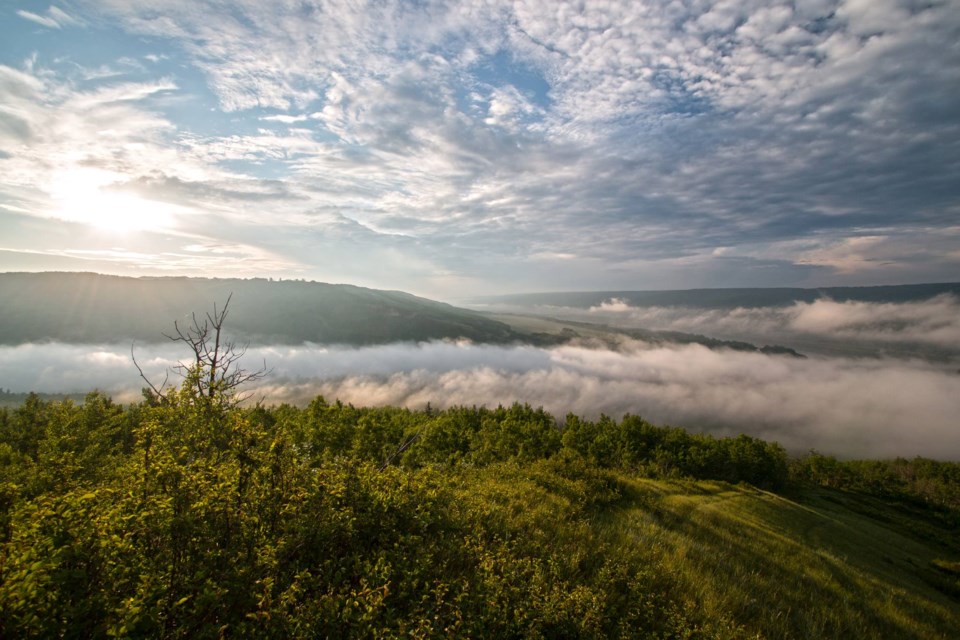A cool morning photograph of the Peace River last summer is turning heads in Canada’s construction industry.
Jonathan Bloomer snapped this awesome wall of fog engulfing the Site C dam site on Aug. 5 — earning a nod as a finalist in the 2021 Canadian Construction Photo contest by On-Site Magazine, a national trades publication.
He took the photo from his post as Tower Crane 7 Operator at the construction site outside Fort St. John.
"On a cool morning in August, Tower Crane 7 operator Jonathan Bloomer caught the fog bank in the Peace River Valley as the sun rose behind him," the magazine judges noted.
"Morning fog is a common occurrence at the Site C Dam site as the cool, moist air coming off the river is trapped underneath a stable, warmer air mass in a temperature inversion."
Dense and low lying fog through the river valley often makes for surreal and dreamy scenes for Fort St. John photographers.
Local photographer Darcy Shawchek took this ethereal photo of fog snaking around a turn in the river at Bear Flat, upstream of Site C, in November 2015:

And photographer Don Hoffman captured this fog filling up the valley, also upstream of the dam site, with the Rocky Mountains in the distance:
Before the dam's construction, BC Hydro studied and forecast changes in the intensity of normal and heavy fog in the region once the stretch of Peace River between Fort St. John and Hudson’s Hope is flooded and turned into a reservoir.
In the company’s environmental submissions to the federal government, technical experts noted increases of normal fog at the Fort St. John airport (seven hours per year), the Taylor Bridge (eight hours per year), Hudson‘s Hope (one hour per year), and lower Attachie Flat (nine hours per year).
They predicted the number of heavy fog hours to decrease at most locations except the airport, where an increase of six hours per year was predicted, and at Taylor Bridge, with a predicted increase of 118 hours.
At other locations along the river, they predicted decreases in normal fog hours at Bear Flat (30 hours), Attachie Plateau (25 hours) and the Site C dam location itself (18 hours).
“There is a general pattern of decreases in fog near the reservoir and increases in fog further away,” the report stated.
“Close to the reservoir, the increase in temperature is the dominant factor, so the air can hold more water and the number of fog hours is decreased, even though the total amount of water in the air is increased.
“As the air moves away from the reservoir, the influence of the reservoir on temperature is lost and the air cools to be the same as without the reservoir. However, the increased water content remains and thus there is increased fog.”
editor@ahnfsj.ca



